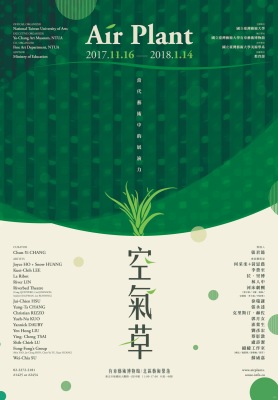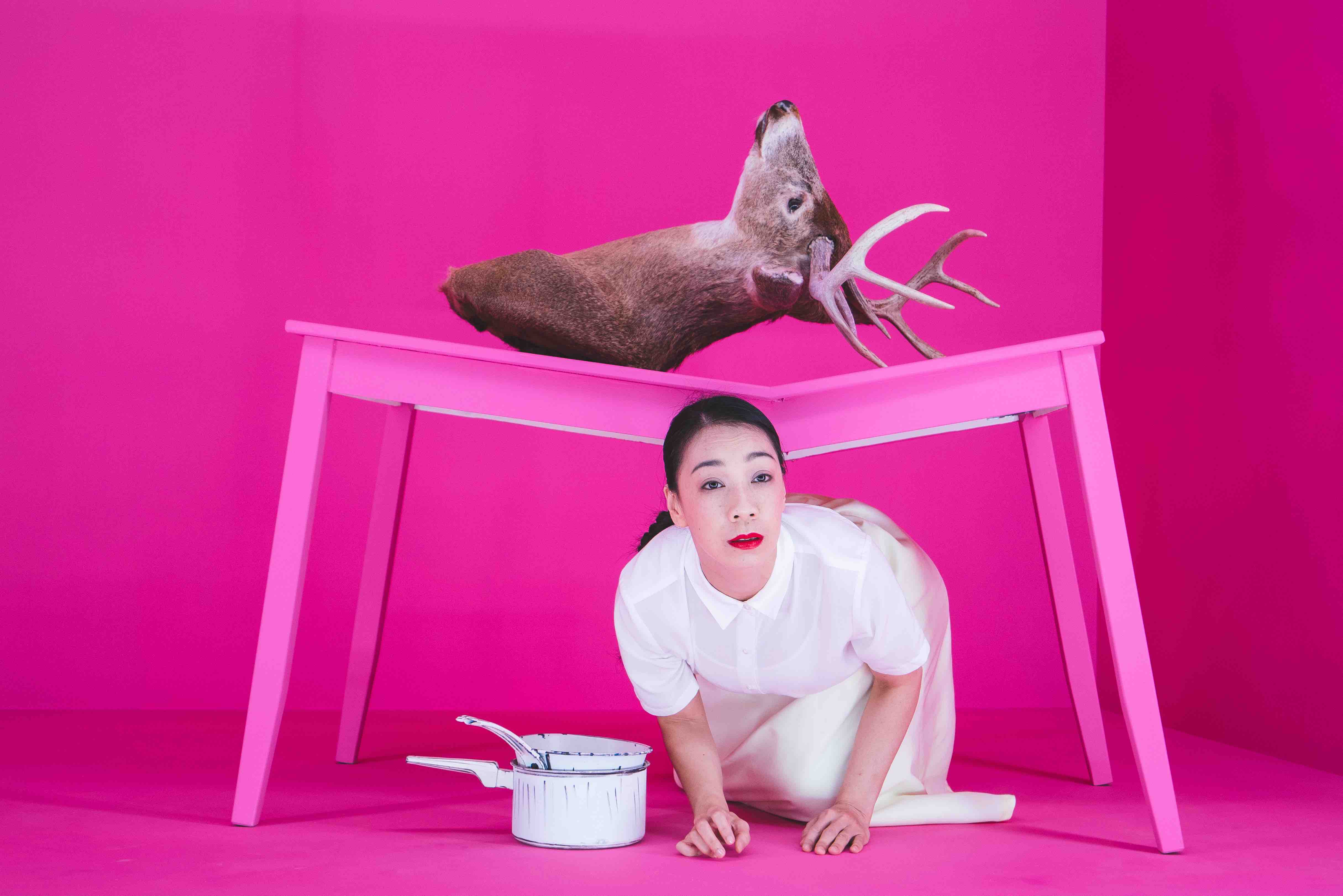
When air plants vibrate in the air, are they merely breathing or are they conversing?
- Making Instant Observations: The Rise of Postnatural Aesthetics
In general, contemporary art emphasizes subjectivity. However, Asian contemporary art also pays attention to the subjective constructions of individuals, groups, societies, and histories. For the Air Plant: Performance Ability within Contemporary Arts exhibition, a group of artists engaged in human sociology and New Historicism-oriented art practice and utilized images and files to tell stories in a variety of ways. Opposition must be in place for art to mature and prosper. The qualities, vibrations, and sounds of air plants serve as a novel inspiration for art creation to transcend the boundaries of history and geography, creating postnaturalism-based object aesthetics that mirrors New Historicism-based narrative aesthetics. The new aesthetic concept “echoes” with ecosystems without paying them any compliments or criticisms; the concept flows freely in time and space because both truth and lies are all elements of life.
Art created based on the concept of New Historicism or postnaturalism involves the use of symbols to inspire or enlighten its audience. “Mind Games,” an article written by Spanish naturalism philosopher and aesthetician George Santayana (1863–1952), indicated that if a person’s makeup consists of only a pure soul and not the body given by Mother Nature, then the so-called spirit is itself an incredible mystery. Santayana contended that natural symbols are not fixed objects but rather sources of inspiration. These symbols are the starting points of knowledge and inspiration.
In the world of art, people continue to debate and change the subjective and objective “positioning” of contents and transmission methods, in which cognitive science ultimately evolved to become the rational method of judgment. Rational aesthetics is a notion that has evolved from Western positivism in the late-nineteenth century, whereas naturalism (a philosophical trend that had enjoyed great popularity in the United States between the 1930s and 1940s) is based on natural sciences (e.g., physics and biology, which had undergone considerable developments in the twentieth century) and serves as the driving force of cultural art. Naturalism emphasizes that nature is the only truth in life and that all events, phenomena, and existence in the Universe are the ways of nature. Nature signifies existence, and vice versa. Without nature, there is no existence. However, contemporary and artificial postnatural creations generally employ the idea of self-expression, and game-like manufacturing processes and work existence are utilized to display the internal spirit of exhibitions. By using game theories to see how art reveals the spread of awareness as well as the methods by which it is spread, exhibitions and exhibition items no longer serve as the materialization of curatorial ideas, but rather as products of collective consciousness.
- Interpreting Exhibitions: Understanding the Total Subjectivity of Exhibition Methods by Using Game Theories
Hans-Georg Gadamer (1900-2002) proposed three game theories to explain the relationships between games and art creations: the first theory is the self-oriented theory, which stipulates that activities are performed with the intrinsic objective of self-expression; the second theory is the fusion theory, which stipulates that games provide a platform for mutual participation, facilitate the fusion of ideas, and feature the spirit of recreation and circulatory spiritual exchanges; and the third theory is the composite theory, which stipulates that art is a manifestation of sensibility and non- sensibility and subsequent activities are engaged to create a composite state.
Gadamer asserted that the extrinsic objectives of many games created by humans are “superficial”; that is, the objectives of the games are not the ultimate goals, but rather the intermediate goals. These intermediate goals enable people to showcase their desire and abilities and allow the game to go on. Site-based exhibitions normally contain objectives similar to those of games. Game areas are defined in a way similar to how sacred areas are defined. This creates site specialization and spatial structure characteristics, imbuing a sense of uniqueness in art activities performed at the sites. The true purpose of games is to alleviate players’ anxiety as they seek to accomplish the games’ objectives. However, because extrinsic objectives demand that players accomplish them, players who are exposed to extrinsic objectives cannot but feel tension and anxiety. By contrast, players who are not exposed to extrinsic objectives will experience freedom and relaxation. If exhibitions are to demonstrate game-like characteristics, they must be organized in a free, relaxed, and pleasant manner, and exhibition-related competition and stress must be eliminated. Moreover, similar to making the items of games the focus of games, art and derivatives created must be viewed as subjective entities.
The word “games” introduced by Gadamer refer to comprehension games rather than regular games. Because art exhibitions are a form of “comprehension games,” in which the “participabilities,” “re-creativities,” and mediating abilities of games allow exhibition sites, curators, and artists to exchange ideas and showcase the intrinsic characteristics of the exhibitions. Thus, we used Gadamer’s game theories to explore the art-based subjectivity of exhibitions. Gadamer categorized the overall activities of an event rather than the event organizers as the “main body” to allow the event and individuals participating in the event to complement one another, giving birth to the term “overall subjectivity.” The charm of games is to make the games greater than their players and take on a more dominant role.
Gadamer defined “game” as a “coexistence-based, symbiotic activity between main bodies” and declared that when he discovered hermeneutics in art games, he presented the concept of “relationship cognition in art arenas.” By using this perspective to examine the creation and formation of exhibitions as well as the interactions between curatorial philosophies and artworks, games no longer signify attitude, the emotional states of creative activities or appreciation activities, or the intent to achieve some kind of freedom of subjectivity; instead, they signify how artworks exist. Accordingly, when we see curatorial games as aesthetics in the making, we no longer inquire about the intrinsic qualities of the games but rather how the games exist.
By studying curatorial philosophy-based and artwork philosophy-based game theories, we see the “interaction” between “transformation” and “assimilation.” When games undergo art transformation, their components must also transform for the transformation to be deemed complete. Transformation is a type of creation. According to Gadamer, “verwandlung” (transformation) differs from “veranderung” (change). When things change, they retain their original qualities. By contrast, when things transform, they leave behind their original qualities and become something else, something new. In other words, to Gadamer, transformation is comparable to chemical reactions, where two chemical materials react to form a new compound. The new compound, created by the two chemical materials, is neither one of the two but a completely different one. Although the original materials vanish during this process, they are reborn as a new material. Comprehension games are a psychological activity where the “players” and “audience” are the perceptions of the participating individuals rather than the mediums conveying the messages.
The aforementioned idea was used to examine the interaction and conflicts between history and modernity, those between localization and globalization, those between political art and art politics, and those between curatorial philosophies and art creations. When all of these elements are presented in the world of art, they undergo a chemical reaction to become a new compound. As separation and integration cannot be achieved, the compound is viewed as a new product embodying new subjective consciousness.
On the basis of the aforesaid ideas, the exhibition venue used to host the Air Plant: Performance Ability within Contemporary Arts exhibition was viewed as an entity with subjective consciousness, and Gadamer’s comprehension game theories were used to curate the exhibition. Via exhibition-related discussions and artwork displays, the Air Plant exhibition was transformed into an artwork, a compound with the spirit of games.
- Catching Grass Roots: How Air Plants Grow and the Differences between Them and Other Plants
When discussing the curatorial concept of the Air Plant exhibition, Chun-Yi Chang, an individual who has lived in France and specializes in conducting contemporary plastic art practice-related studies, put forward a few questions to urge the public to reflect on the current state of contemporary art: Does the coexistence between contemporary art and postmodern era multiculturalism provide a foundation for advancing towards a new era? Or does it signify entering a state of linear progress and repeated examination of history, becoming ingrained in normative thinking, or wallowing in endless nostalgia?
In her discussion, Chang referenced the idea of “altermoderne” (altermodern) (which is created by drastic transformations) to introduce a nonlinear, unbroken art development possibility. To explain the concept of altermodernism, Nicolas Bourriaud used radicants as an example: he showed how their new roots continue to grow from their stems in different directions, symbolizing the constant changes and creations of contemporary art. Concerning radicants, they are characterized by their continual growth and connections to the outside world (in various ways), mirroring the growth of rhizomes described by Gilles Deleuze (i.e., any part of a rhizome can become connected to an external object to form a bond). Both Bourriaud and Deleuze’ concepts emphasize contemporary, non-conventional cultural production and transmissions that differ from traditional culture while retaining its original qualities. In other words, these concepts explain that new art varieties produced under the influences of postcolonialism and postmodernism exist in their own ways. Because neither radicants nor rhizomes abandon their roots, art created based on these concepts are often regarded as “subspecies” rather than “new species.”
The living patterns of plants are determined by their surrounding environments. Bourriaud subsequently focused on the notion of environment, with which single entities have a relationship with. His environment-related arguments mirror those of French positivism in the nineteenth-century; French historian and critic Hippolyte Adolphe Taine (1828–1893) proposed using the laws of nature to interpret art phenomena and utilizing empirical views to establish the basis for aesthetic judgment. He proposed that “race, milieu et moment” (nation, environment, and time) can be employed to generate main internal source, external pressure, and acquired kinetic energy, which in turn bring forth cultural vitality. Taine suggested environmental interpretation, arguing that individual subjects are influenced by the environments in which they are in, and that art performances can be explained using history and cultural environment. In terms of aesthetic judgment, he contended that feelings are not facts but rather illusions.
Influenced by the idea of “l’écart et le dialogue” (the gap and the conversation) introduced by French philosopher and curator François Jullien, Chang referred to the “la fécondité des cultures” (cultural fertility) found in cultural gaps to exhibit the artworks of the Air Plant exhibition. The artworks were allowed to leave their roots and grow, present eccentric ideas and intervene the norm, and flourish within the exhibition venue. Chang’s art team discovered air plants, a type of native short-stem epiphytes (that belong to the family Bromeliaceae) that can serve as a metaphor and a sign of vitality. Emulating the essence of air plants, the artists replaced the consciousness of the society with their own. Their artworks became less dependent and related to traditions, similar to air plants growing without roots. In addition, these artworks were completely new, similar to products created from chemical reactions.
Air plants use the paraphyllia found on their leaves to absorb water and nutrients from the air. Because they are easy to grow (i.e., they will grow as long as they are exposed to water and sunlight), they have been called “strongest plant on Earth.” This exhibition was named air plants for two reasons: first, it signified that the art creations resembled radicants, which grow according to the environmental they are in (e.g., air plants can still survive by using their leaves to absorb nutrients); second, the relationship between air plants and the environment inspired discussions on cultural gap.
Based on the curator’s philosophy, the artists designed artworks that featured the characteristics of assimilation and transformation. This art team replaced history with ecology, geography with environment, sound with perception, separation with connection, and interdisciplinary union with interdisciplinary integration, in which many artworks were produced from experiments and underwent temporal changes. Although these artworks seemed like those from joint exhibitions, the production process was lively and exciting. The objectives of the Air Plant exhibition were as follows:
We wish to display the performance ability of contemporary art as well as various possibilities through art-based dialogues. The Air Plant exhibition touches on a variety of subjects including objects and props, behavior and performances, installations and landscape, the reorganization of bodies, objects, and space, the interpretation of body movements and videos, the friction between imagination and reality, and the blueprint of people’s lives created by piecing together daily objects. Visitors are invited to experience the performance ability of contemporary art by observing how people (bodies), things (behavior/performances), and objects (sculpture/items/installations) are presented in it; its performance ability is an unfinished process, which may be expanded, without limit, through dialogues.
Therefore, this exhibition should be viewed as a game-oriented art production rather than a performance ability-based art practice. This art production method emulated the purposeless of art games that are free from politics, religions, and economics. Artists created perception-based games, in which current states were used to foster new states. The methods by which air plants survived became the method to create artworks. Air plants’ ability to grow anytime, anywhere, and any way facilitated dialogues and games between individuals and collective groups and formed the overall characteristics of the exhibition.
- Searching for Perception: When Air Plants Vibrate
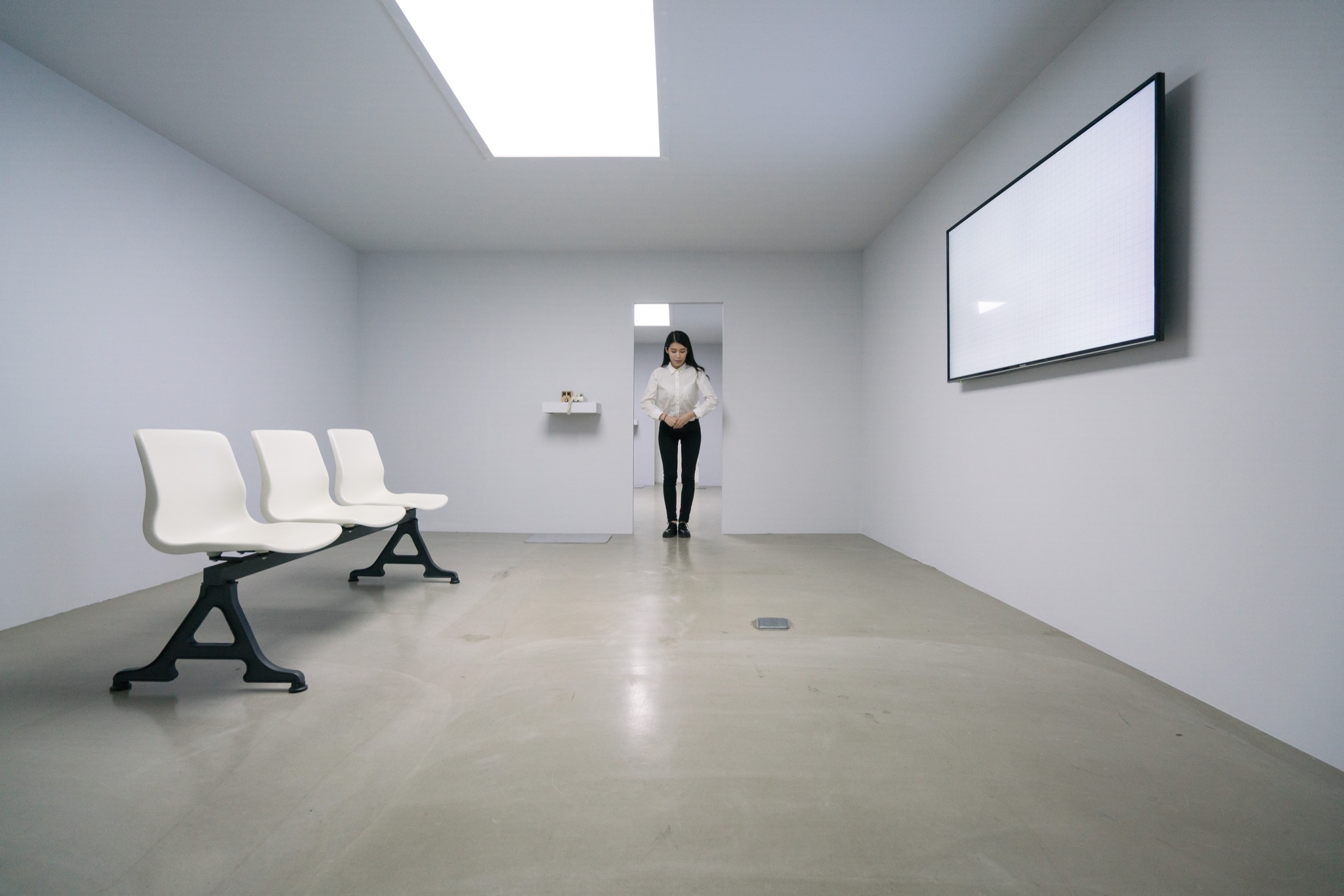
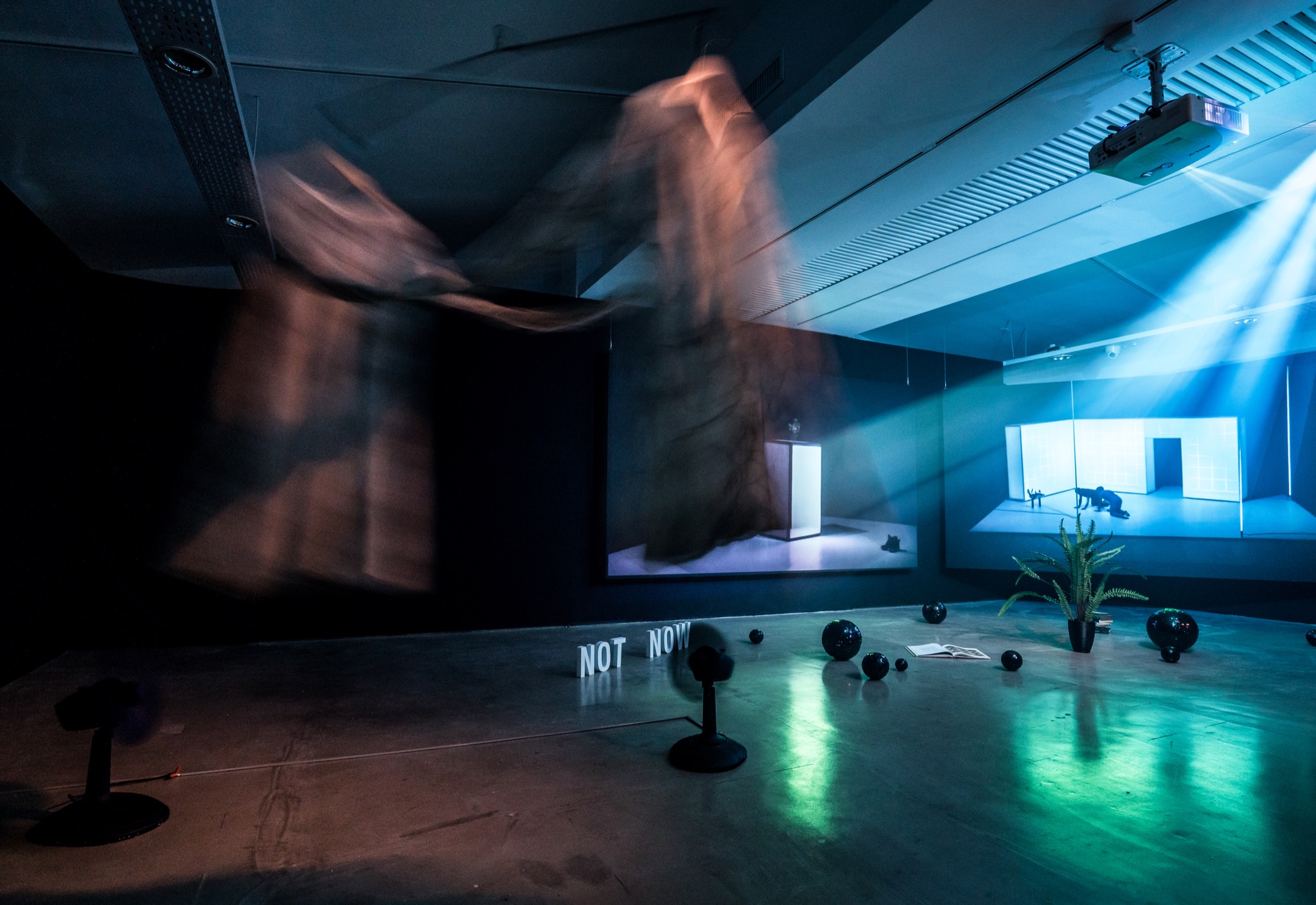
22 participating artists and their artworks were presented in a space comprising a venue where a white box and a black box existed in harmony and one where many abandoned settlements were found. The two exhibition venues were used in the “Greater Taipei Biennial of Contemporary Arts” held two years ago. However, the organizers of this exhibition did not experience the pressure experienced by the organizers of the “Greater Taipei Biennial of Contemporary Arts” (because of expectations for Greater Taipei, an international exhibition, and a biennial exhibition). Thus, the overall ambiance of this exhibition was relaxed.
For this exhibition, the curator and artists invited the audience to walk into the exhibition venue and use their bodies to experience the incessant power of art production illustrated by game-based objects. The curator defined the power as “performance ability” and “game appeal.” Regardless of how the artists engaged in art practice (i.e., by using sounds, videos, objects, performances, and/or spatial installations) and where the artworks were presented (i.e., in the white box–black box exhibition area or abandoned settlements), the objectives of the games were to “search for perceptions” and learn “how to perceive.”
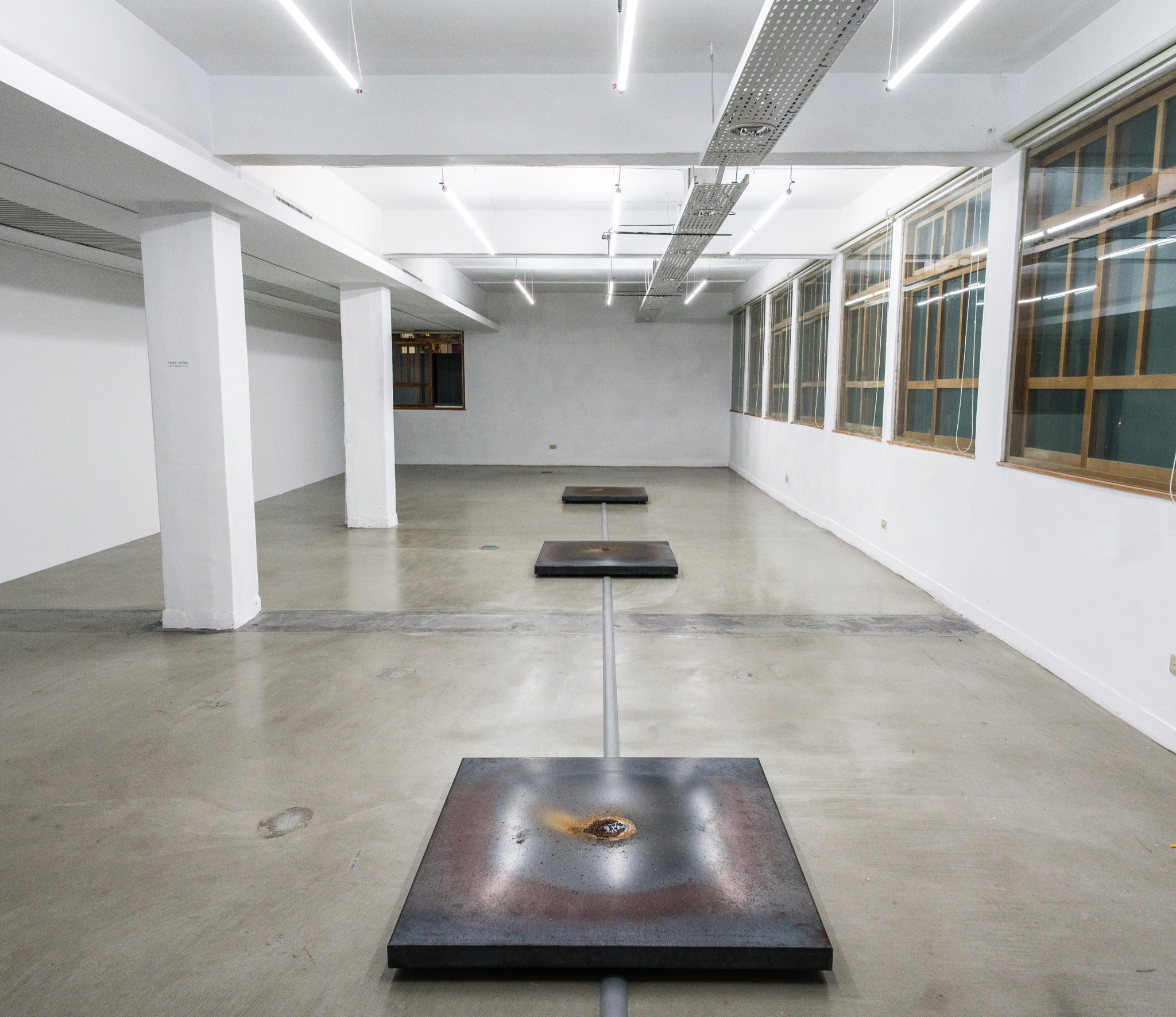
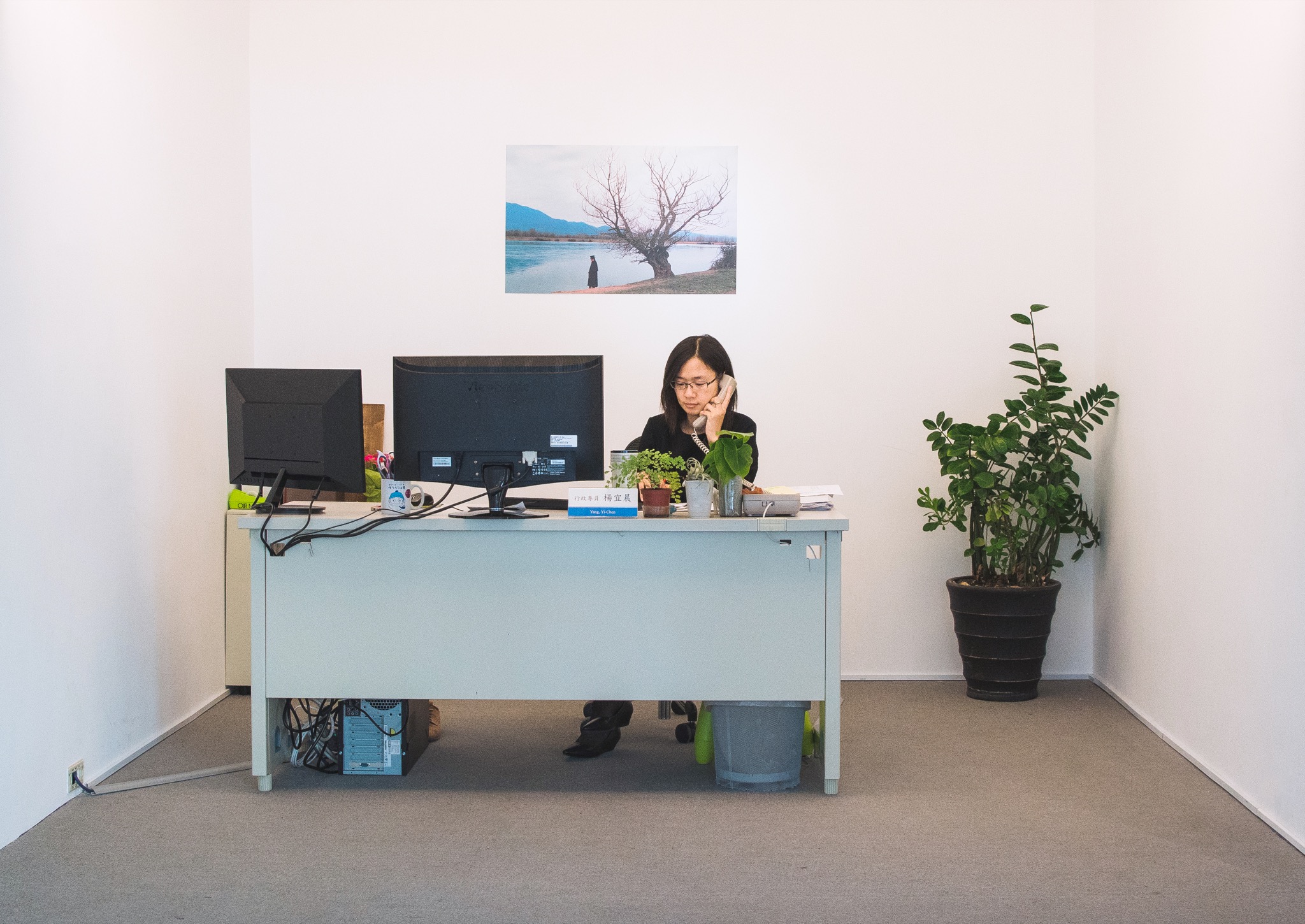
Perception, the objective of this exhibition, transforms into an inanimate subjective consciousness as air plants vibrate. In These Things that Drift Away (created by Joyce Ho), whiteness and light are used to illustrate the subtle difference between time and memory (Picture 1). In Some Events are Currently Ongoing… (created by Christian Rizzo), bodies, objects, and native plants engage in “narrative” and “abstract” interactions in the dark (Picture 2). In Relative Perception N°4-C (created by Yung-Ta Chang), sound and spatial installations as well as the chemical properties of subtle substances are utilized to present time-oriented paintings and sculpture that challenge the way audience looks at artworks and how it reacts. In Beware of Imitations!, La Ribot collaborates with experimental musician Carles Santos and uses camera to capture images that are both real and imagined. In I Stand Naked in the Street with Sleeping Lions (created by Riverbed Theatre), the writings of Sigmund Freud are referenced to explore the boundaries between dreams and reality as well as the truth of self-existence (Picture 3). In A Day in the Life of the Administrator of Yo-Chang Art Museum, NTUA (created by River Lin), a live performance is delivered and the daily life and job responsibilities of an exhibition administrator is revealed.
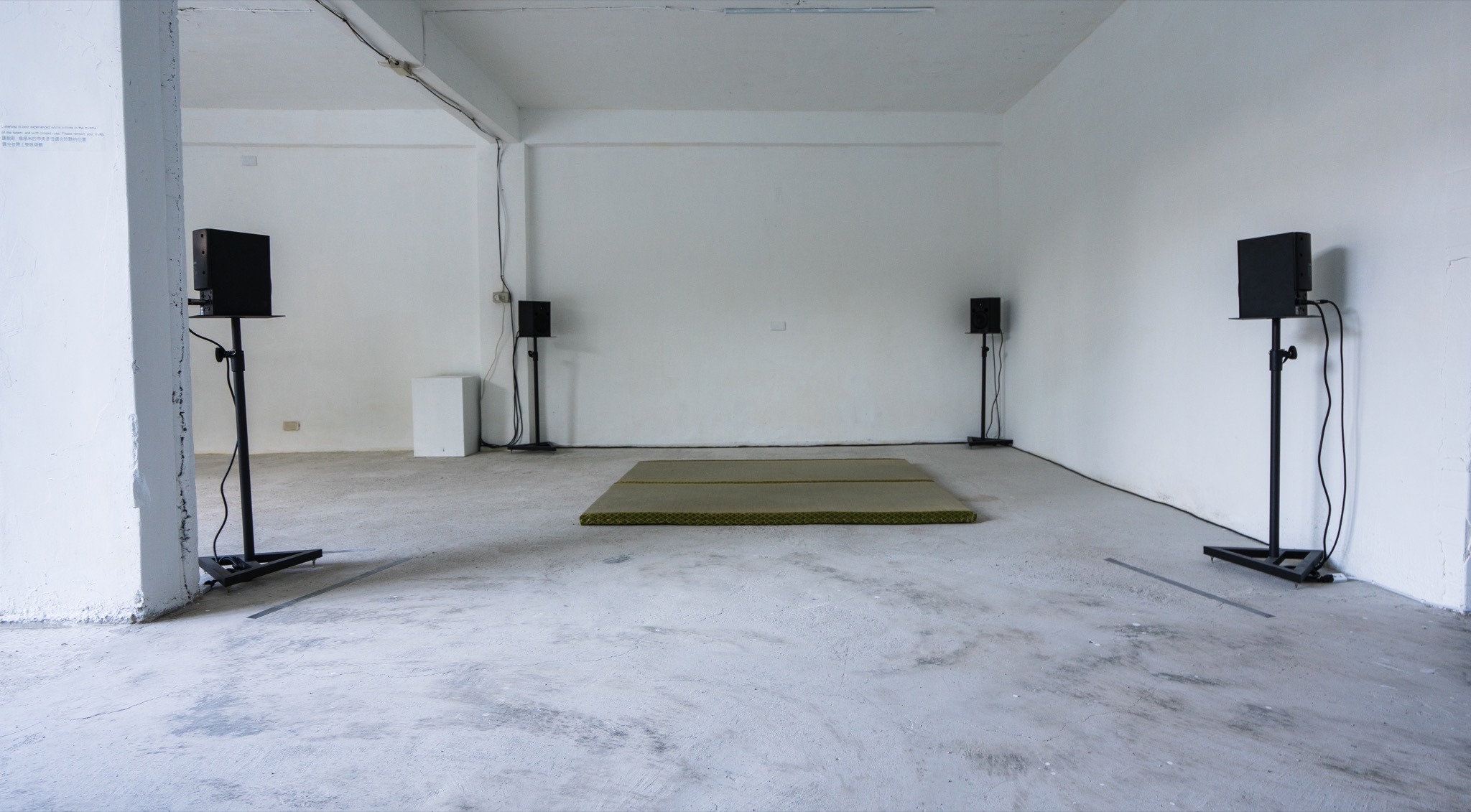
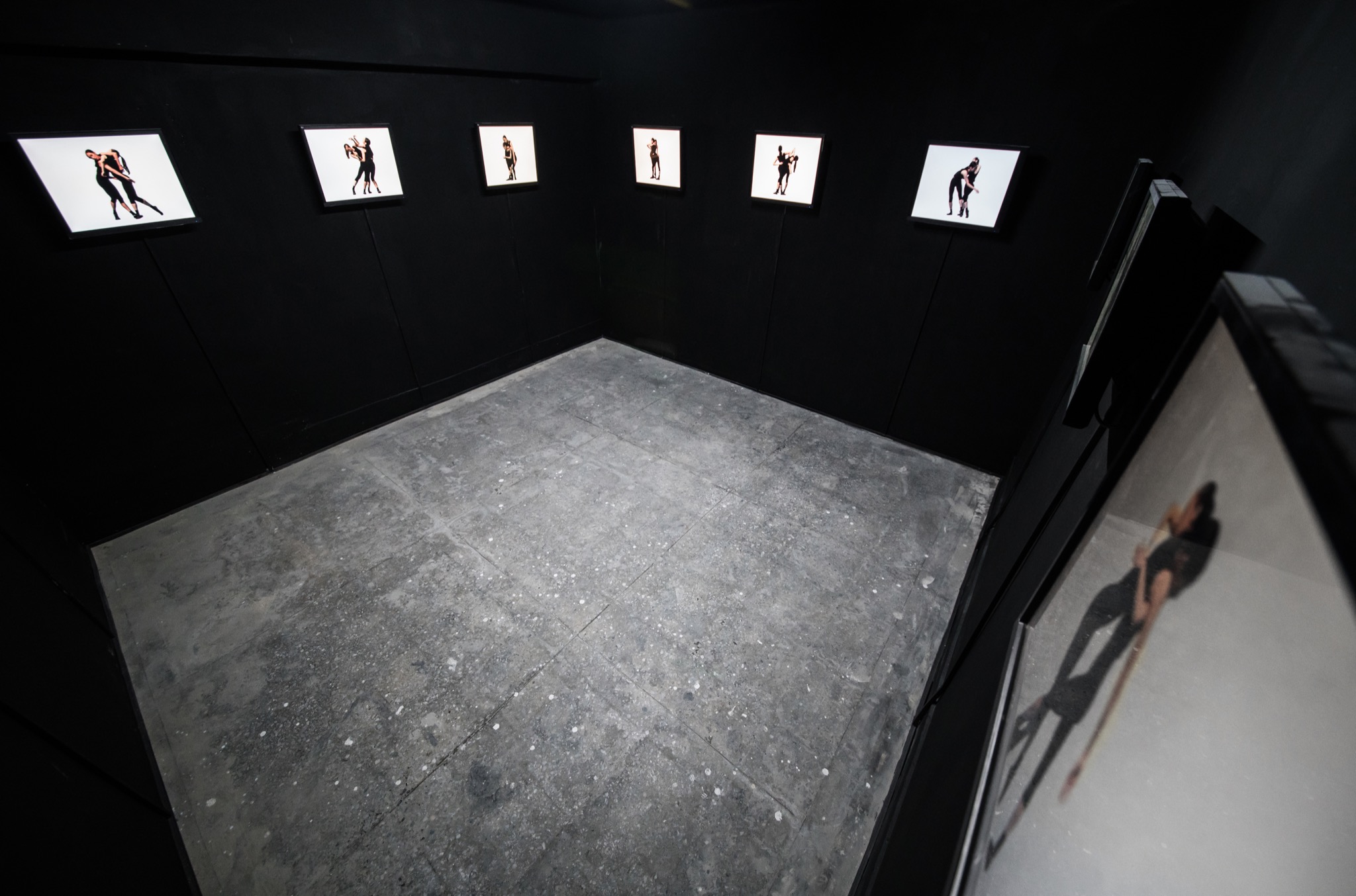
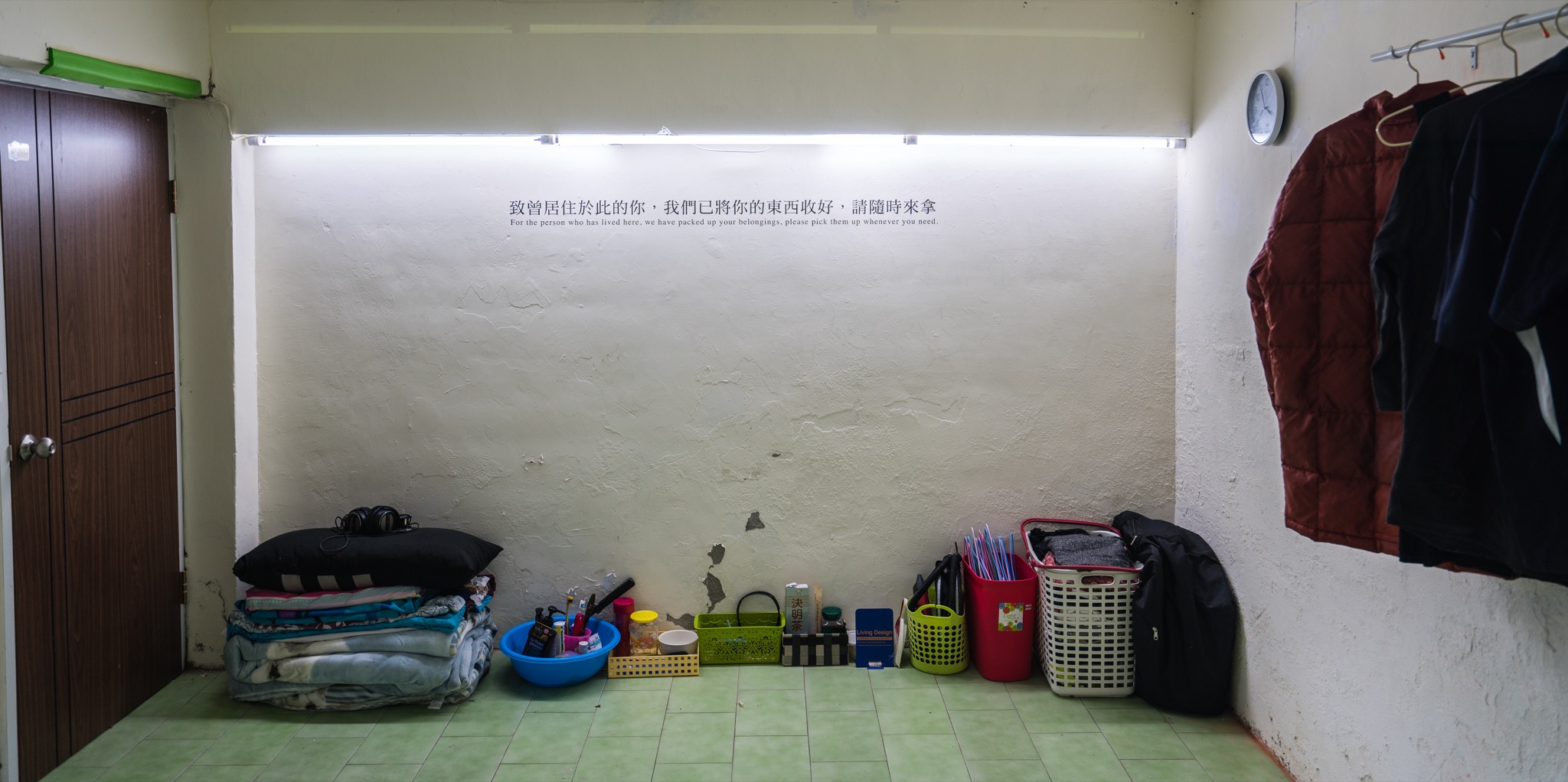
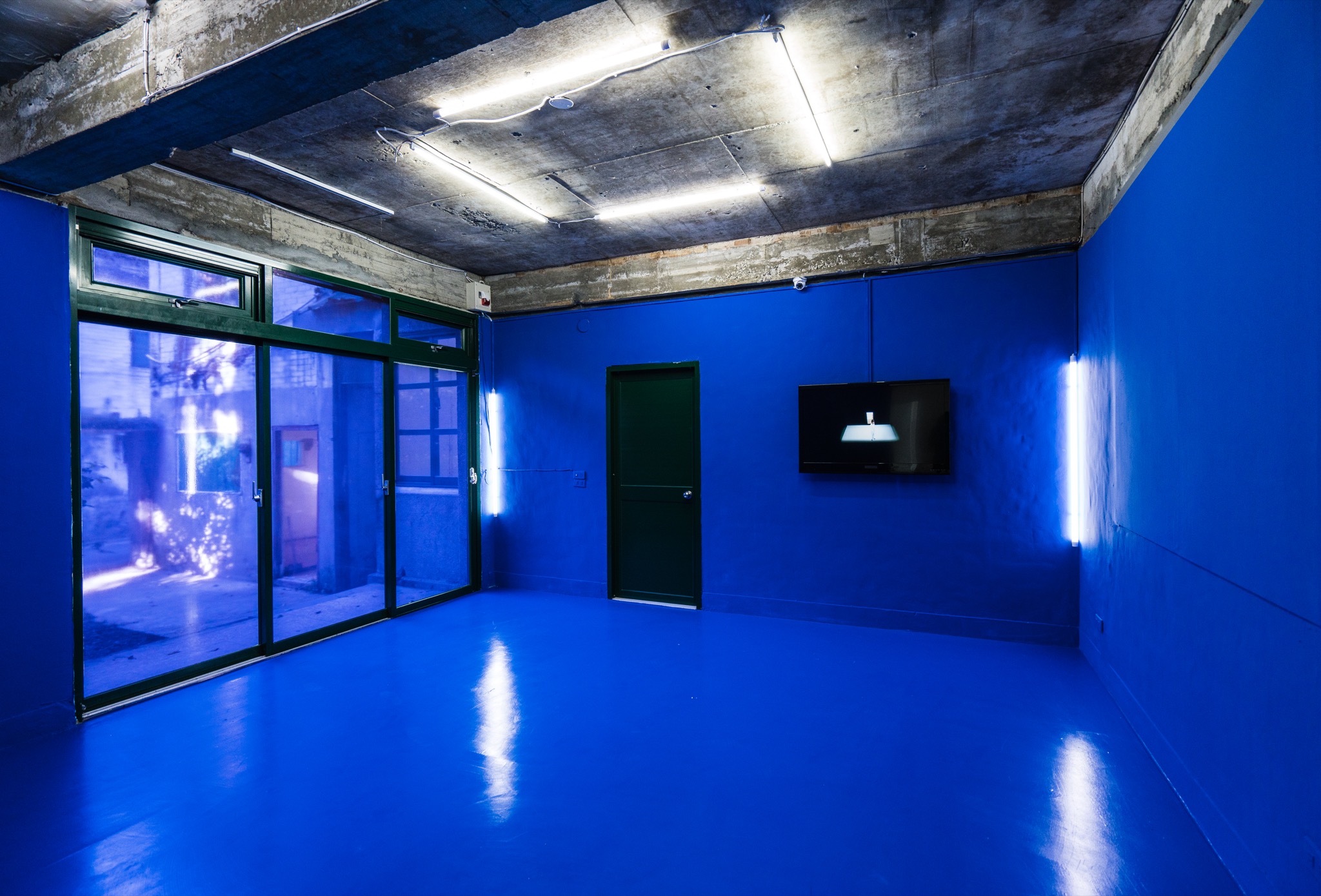
In the historical site of The Northern Campus, artists engage in dialogues according to the space in which they are in. They use sounds, images, objects, and spatial installations to create a new, flowing, matching, and overlapping space and design a new landscape. In Trajectories & Impacts (created by Yannick Dauby), sound “converses” with space and presents new ways of listening (Picture 4). In FreeSteps–Sense of Place (created by Wei-Chia Su), dancers’ bodies are used as a medium, in which dancers’ body movements in a double dance emanate a sense of line, shape, rhythm, music, and light shade (Picture 5). Similarly, in Performer and Order of Dance 2017 (created by Shih-Chieh Lu), a space to express body language is designed, where an autonomous, command-based somatosensory game is employed as a means to construct symbol systems.
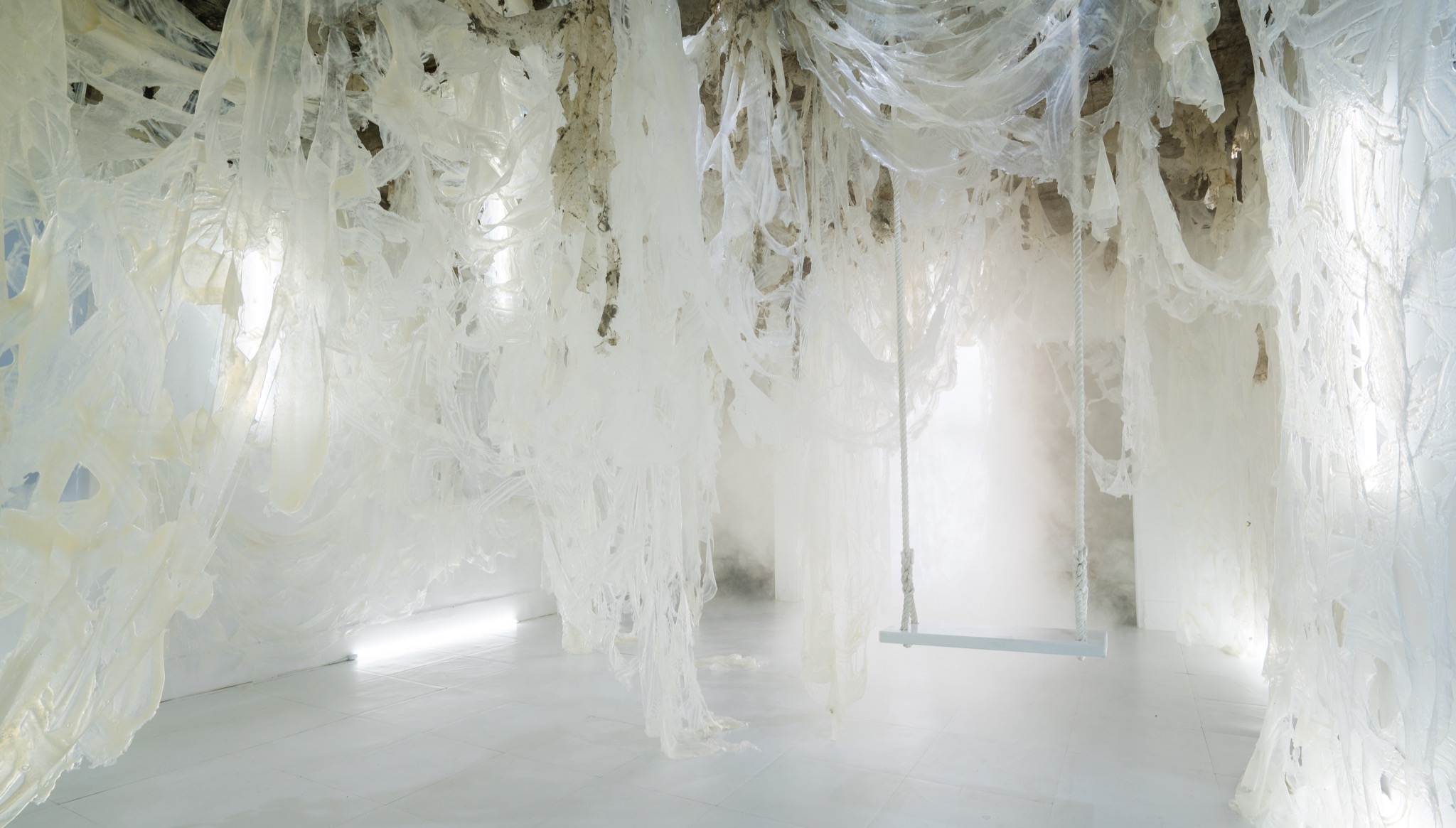
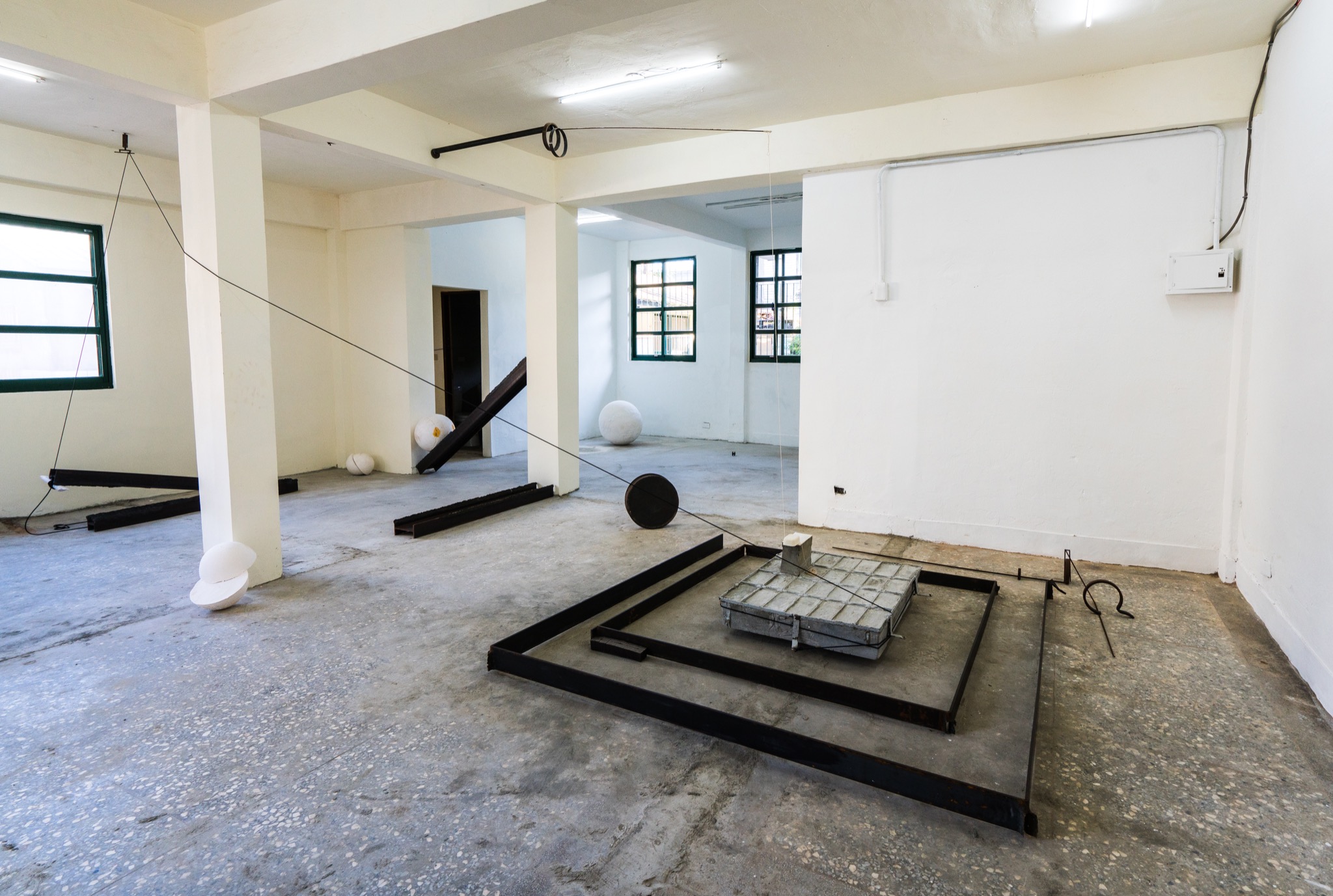
In 254 Yen (created by Joyce Ho and Snow Huang), objects are used to tell a mystery. Whether the mystery is based on fact or fiction remains unknown. The mystery tells the story of a story, witnesses, and material evidence created using the abandoned objects left behind by a wanderer in an abandoned space, where the truth behind this mystery remains to be deciphered. In No. 212 (created by Ying-Cheng Tsai), tiles are used to uncover changes in the environment of a community space and record fragments of information hidden in the flow of time. In Ceylon Houndstongue and the Realms of Land, Water, Fire, Wind, and Space (created by Yen-Hong Liu), occult and psychoanalyses are used as sources of inspiration to present objects made from the Five Elements, explain dreams and the interpretations of these dreams, and produce art in a venue (i.e., a room) that has been converted into a dream factory.
In Layered Space (created by Yueh-Nu Kuo), the surface of building materials is made into peeling, breathing in vivo cortices and building materials and bodily perception coexist in a space filled with plastic chemical materials. Audience is guided into building materials to experience a novel, alienated space. In Direct (created by Jui-Chien Hsu), objects are introduced in a space, and distances between building materials are connected via lines to form a new epiphytic object (Picture 6). In Recycling Scenery (created by Kuei-Chih Lee), vine branches and tree trunks are merged with the ecological landscape and natural events of an abandoned space, creating a new, alienated space. In addition, bowls and utensils used by local residents at times of floods in the past are collected and displayed. In Fong-Fong House (created by Fong-Fong’s Group), Xuan Huang, Jie-Ching Shih, Min Yao, and Chen-Yu Yu repair and regenerate a field space. Examples include them restoring the wet ecology and daily activities of the Fong-Fong House and figuratively “sowing” items in the house to create a time-oriented spatial installation.
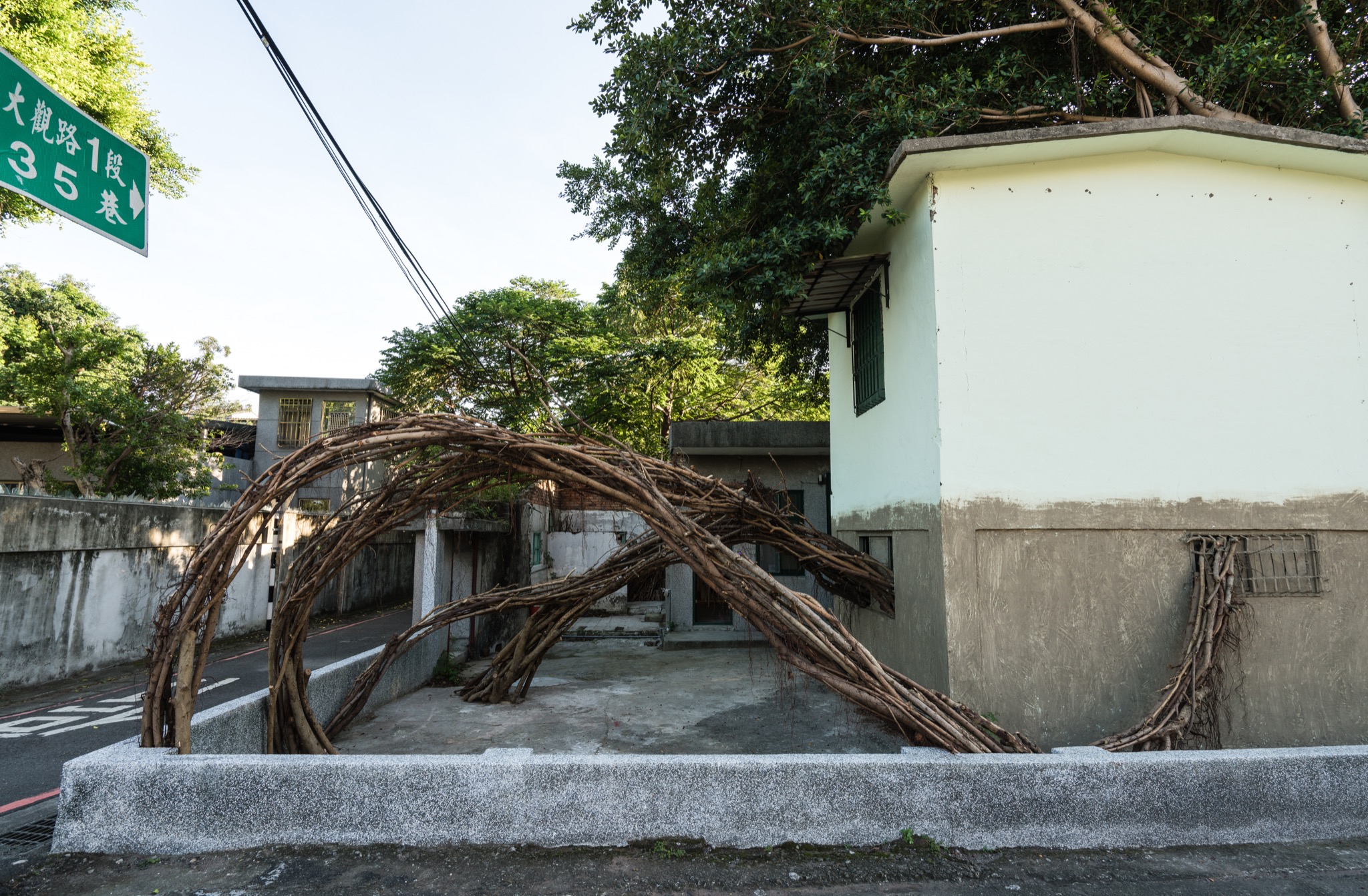
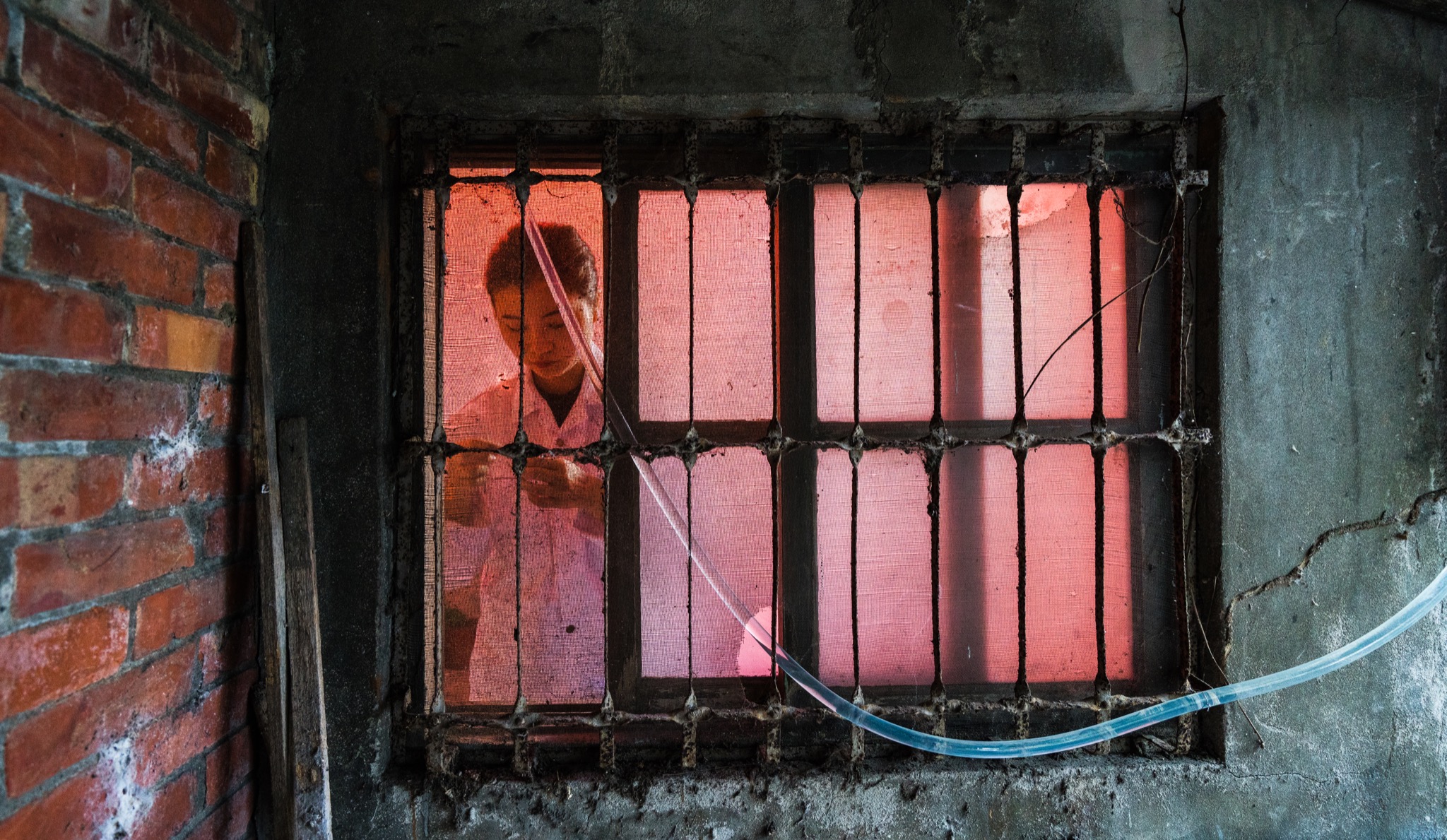
- Awaiting Sounds: What Happens after the Minimalism-based Postnatural Aesthetics Exhibition
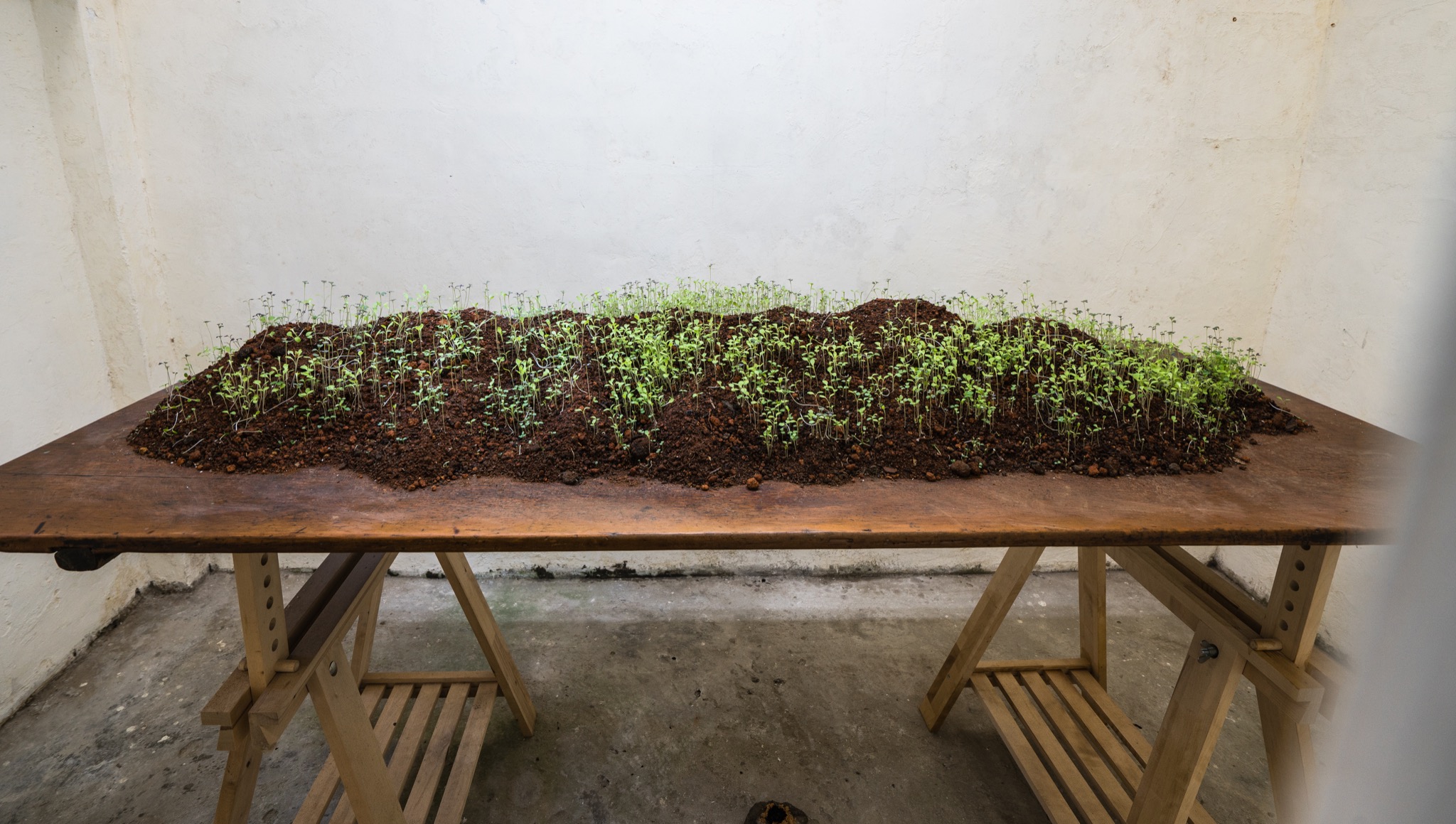
The “Air Plant” exhibition embodies a type of aesthetics that is distinct yet difficult to name. It differs from New Historicism-based aesthetics but preserves an awareness of land and the environment. Thus, we temporarily name the exhibition as “minimalism-based postnatural aesthetics.” I do not know whether this concept will lead to a new art movement after this exhibition. Nevertheless, as the exhibition entails “awakening of perception,” artists with perception are urged to perceive its existence. In addition, rather than focusing on the performance ability of artists in this exhibition, visitors are encouraged to see what air plants signify. In this game of perception, players vie to achieve the state of complete awareness. This exhibition, which successfully conveys the notion of subjective overall consciousness, has thus fulfilled its purpose.
- Hans-Georg Gadamer (1999). Truth and Method. Shanghai Translation Publishing House. http://www.hi138.com
Descriptions of the pictures:
Picture 1. Joyce Ho (2017) These Things That Drift Away. Spatial installation, dimensions variable (music provided by: Snow Huang).
Picture 2. Christian Rizzo (2017). Some Events Are Currently Ongoing…
Picture 3. Riverbed Theatre (Craig Quintero, Carl Johnson, Andrew Kaufman, and Emma Running Lee) (2013–2017). I Stand Naked in the Street with Sleeping Lions, mixed media.
Picture 4. Yannick Dauby (2017). Trajectories & Impacts.
Picture 5. Wei-Chia Su (2017) FreeSteps–Sense of Place. Video installation, dimensions variable (photograph provided by: Chun-Yi Chang; and sound provided by: Yannick Dauby).
Picture 6. Jui-Chien Hsu (2018). Direct. mixed materials (iron, plaster, elastic rope, wood, the Ready-made), dimensions variable
